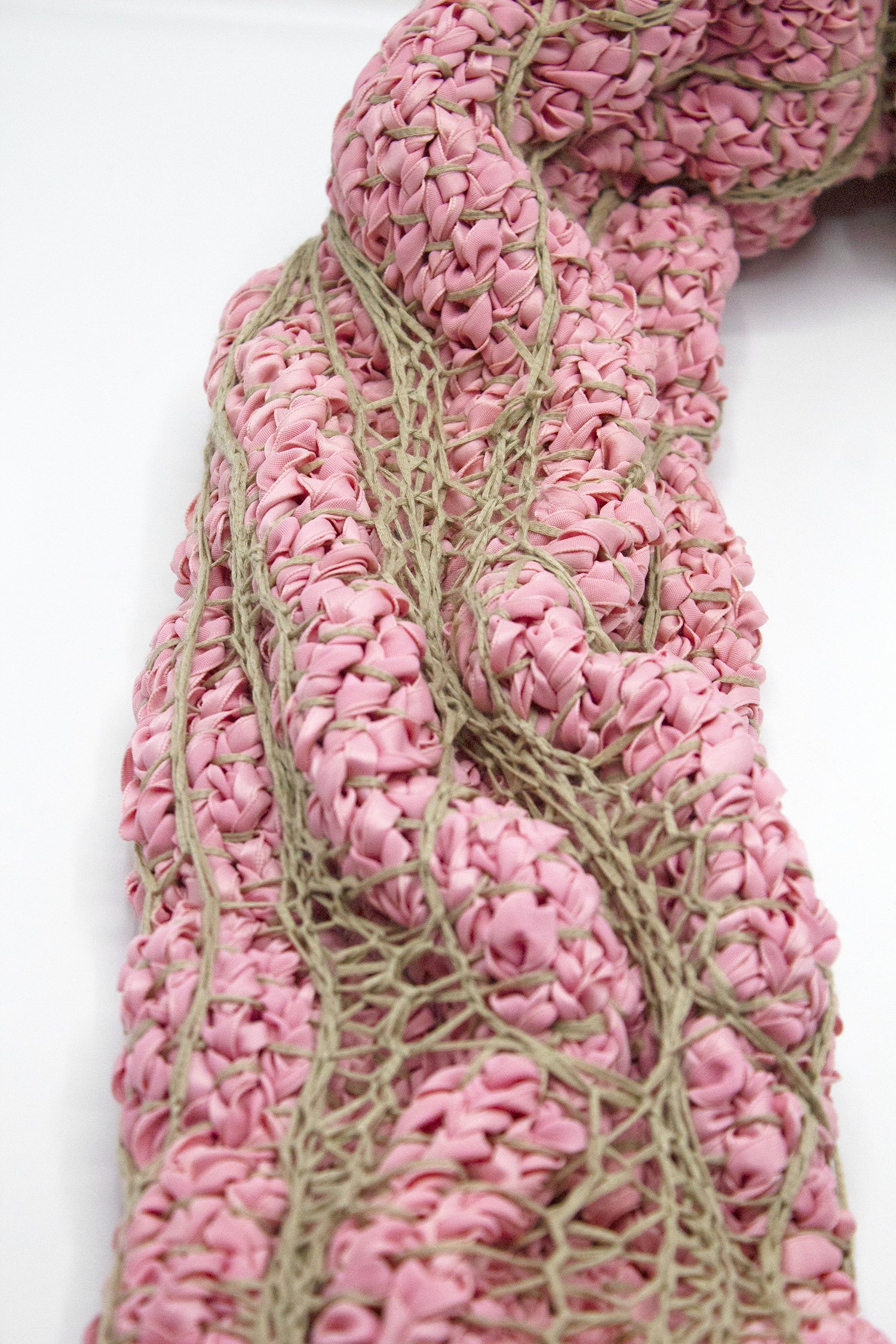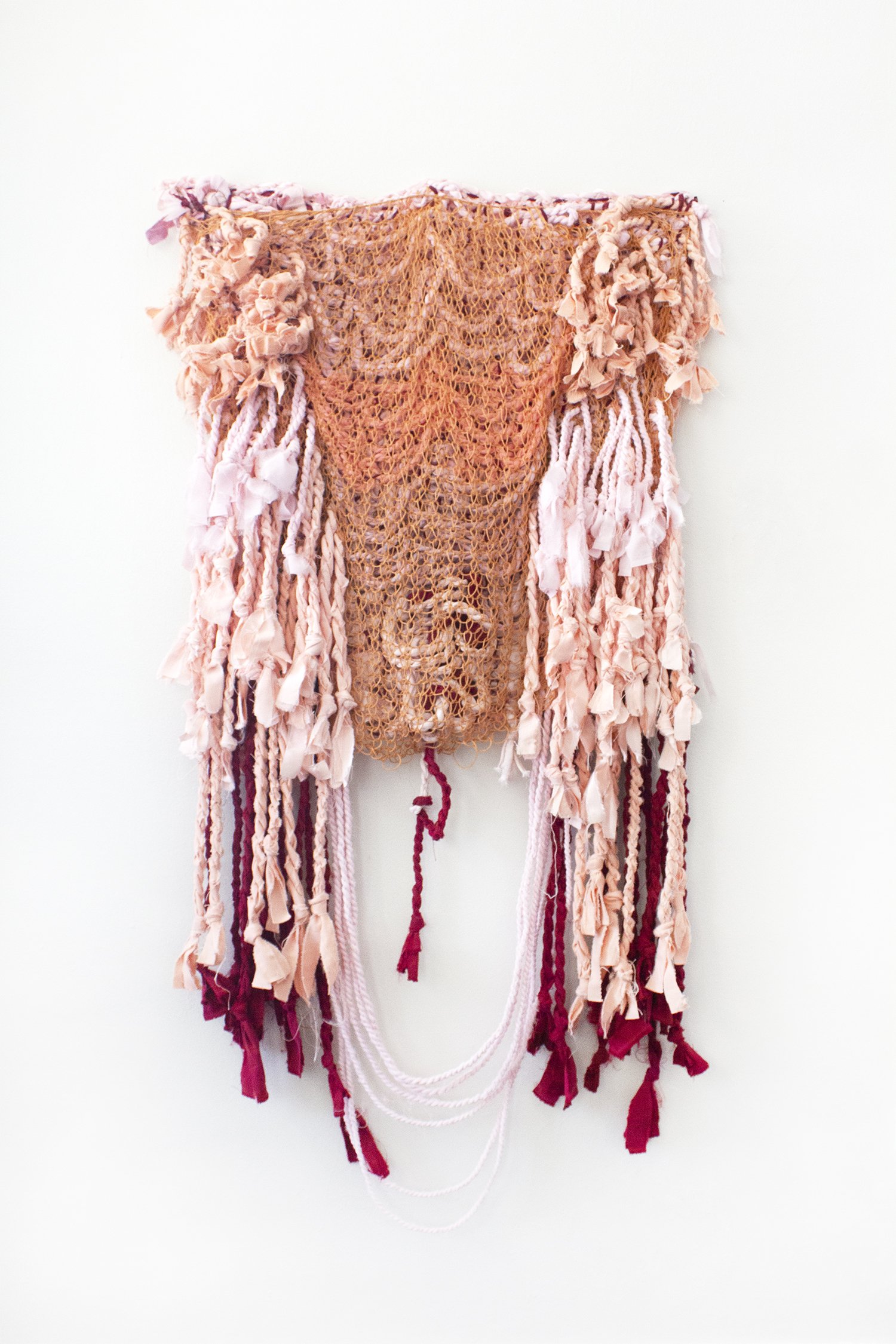I build my sculptures and knittings in increments which are often planned like to-do lists:
1. Wrap armature
2. Weave armature etc.
I employ a “vocabulary of contrasts”, a phrase Tim Ingold uses in his book “Lines”. He explains how the ancient Greeks described speech as “high or low”, “tense or relaxed”. I consider how to act upon my materials in equal and opposite ways (wind/unwind) or I begin a new piece with the aim to create a contrasting form (open/closed, hard/soft, empty/full).
My current body of work is deflated, the bones of my basket bodies removed, only the skin, the outer layer, remains. This knitted skin becomes a new kind of armature, one that provides a slack surface to build upon. I knit my skin/armature out of ribbon and then stitch a simple over, under pattern of yarn that covers the entire surface. These loops provide the grounding for my new surface design, an intuitive crochet pattern that attaches to the surface of the knitted form. Knitting and Crochet are contrasting textile methods, while each stitch in crochet is completed before the next one begins, knitting keeps many stitches open at once. Open/Closed, my “vocabulary of contrasts” employed again.
Did this body of work develop because of my iterative working process or because I have craved rest over the past year and a half? It’s all made when my body is in repose. As I recline, materials encounter my entire body. My work rests, its skin to my skin, creeping down to my toes as rows of knitting multiply. I use the body as a formal and conceptual touchstone for my work that comes together through an intuitive and process based working rhythm. I break the trance of building tiny loops by coming back to my own body: I am making? What am I making? It is present, full, flexible, fatty, rigid, irregular, a body in and of itself.
While this bodily touchstone has been a constant in everything I make, I consider these sculptures to be the most abject. A knitting sits upon my body as I build it. When I am finished, we disconnect: it becomes its own independent body part. More words, more contrast: Inside/Outside, Interior/Exterior. Instead of scared or striated skin, I’ve grown an endoscopic landscape. Once I finish, however, these insides return outside, detach from me, once again external. It strikes me that my “vocabulary of contrasts” can have a dual effect. Its abundant use strengthens my making process but it also conceptually saturates: the presence of so many opposites (both visual and conceptual) can simply break down to both/and or neither/nor. Did you know: Fungi have no insides or outsides. Instead, they are comprised of linear fibers that radiate in all directions, no coherent skin to be seen. What is a body (or body part?) that occupies both interior and exterior space at once—? Maybe I am trying to find out.











